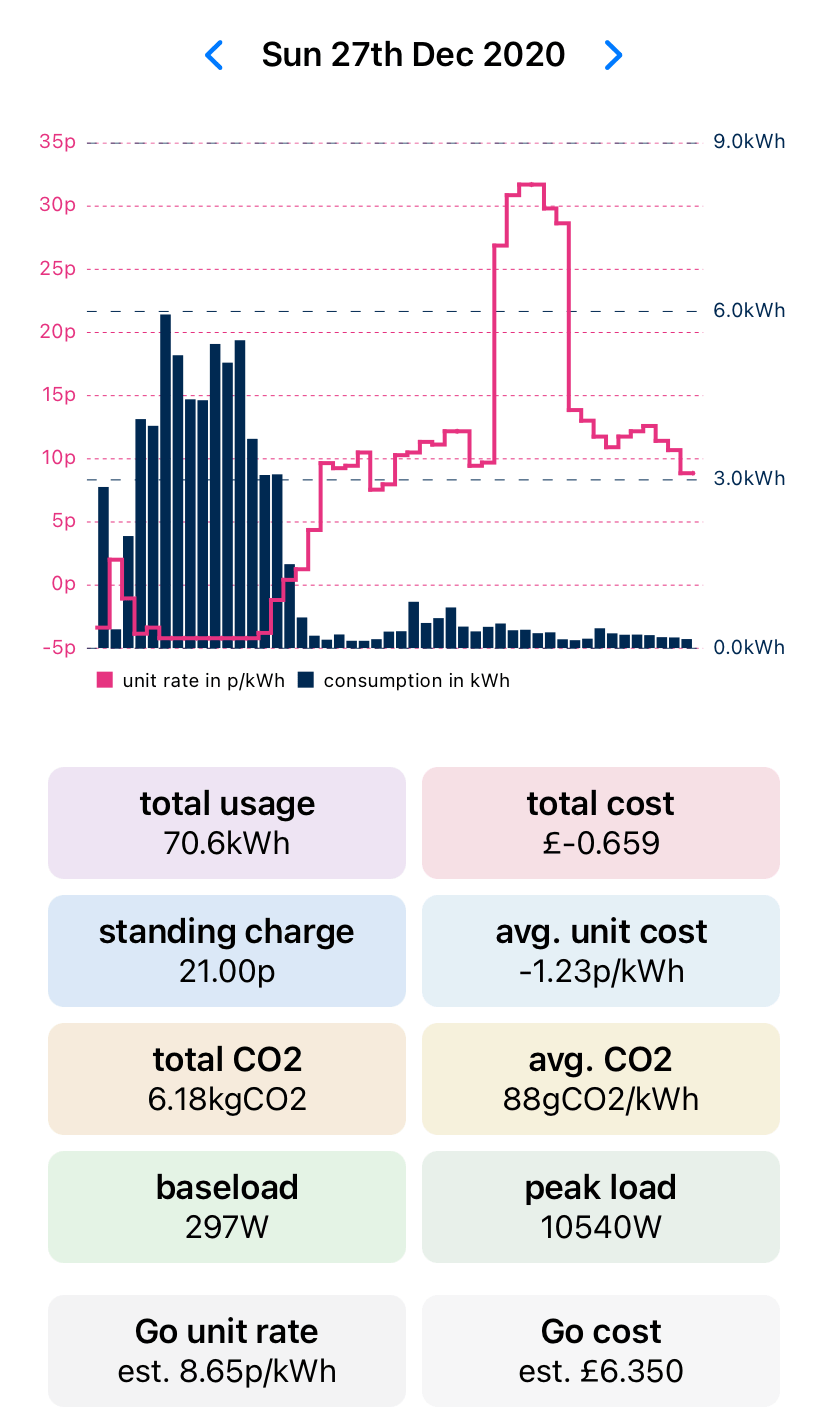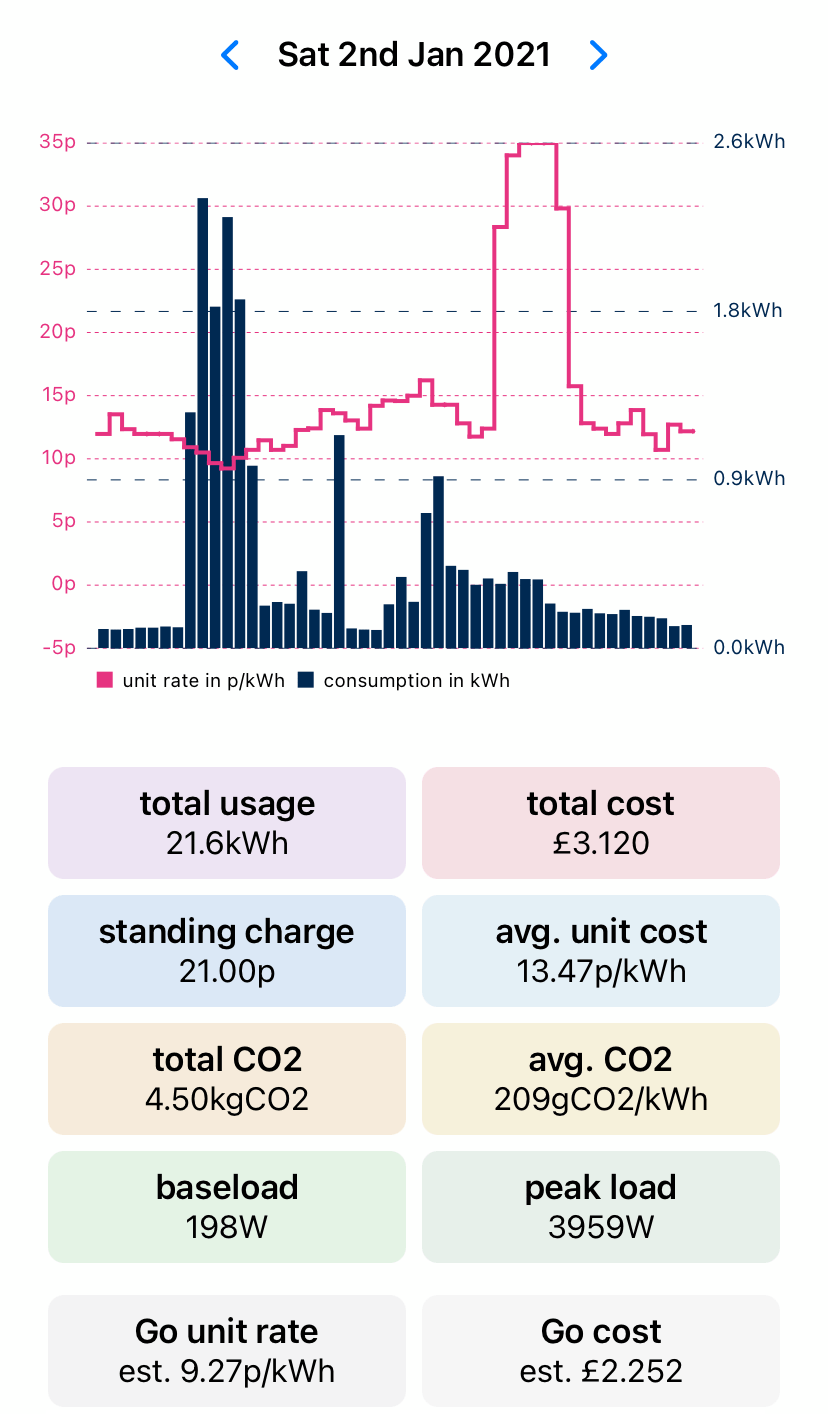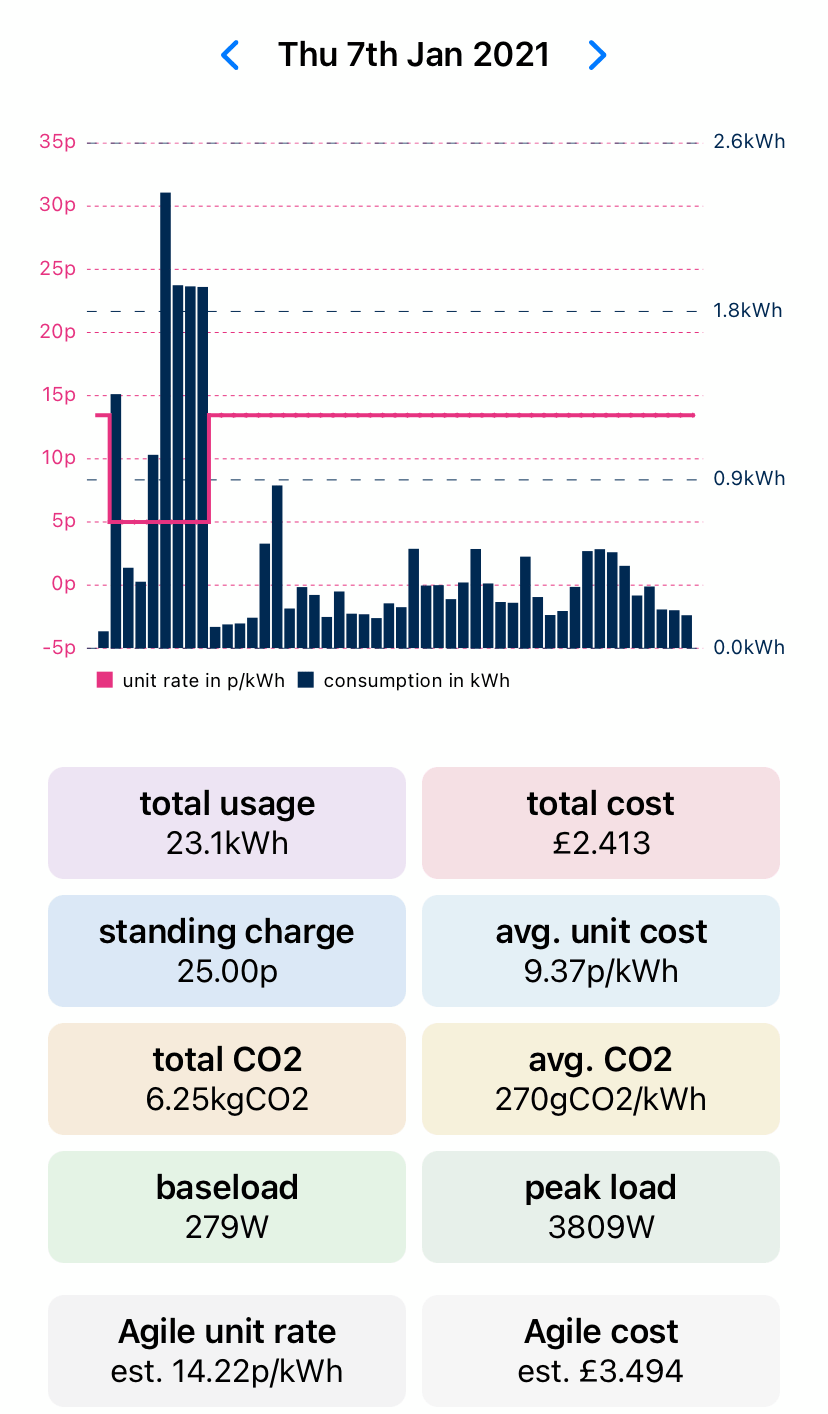Comparing Agile/Go
Octopus Watch is able to automatically estimate your cost on Go while you are on Agile, and vice versa. Other tariff comparison tools overlay Go or Agile rates over your Agile or Go consumption to offer an hour-by-hour comparison. This approach is flawed when you are willing to adjust your usage, particularly for short-term comparisons, as your consumption pattern changes based on the tariff you are on. If the cheapest Agile prices are from 4am-8am, but on Go they are from midnight-4am, then surely you would change the time you turn on the washing machine, right?
Octopus Watch intelligently detects which usage you can move around and which usage is fixed. Based on these calculations the app reworks your usage pattern to match how you would behave differently when you changed tariff. The benefit of the approach taken by Octopus Watch is that it offers you an accurate day-by-day view of how Agile and Go compare. This makes it possible to quickly change tariffs as the conditions on the electricity market change. And quick changes mean you can save more money.
To access this feature you need to enable it. To do so, go to Settings → Options and toggle Compare to Agile/Go. Enabling this option can take some time as the app is perfoming the necessery analyses. For every day you are on Agile the app compares your usage to basic Go. For every day you are on any go tariff the app compares your usage to Agile. For all days where you are on another tariff the app compares to the default variable tariff.
The automatic comparison of Agile and Go rates relies on your baseload. This is the amount of power you use when you are not actively using electricity. It includes power drawn by devices that are always plugged in, such as a router or smart lights. If you are exporting electricity, then during those hours you have a perceived 0W baseload. This value is clearly inaccurate, and it greatly skews the automatic Agile/Go comparison.
The automatic comparison of Agile and Go only works for comparing Agile and Go. Because of the many restrictions that Octopus Energy has recently imposed on its tariffs, comparing one tariff, e.g. Cosy, with another, e.g. Flux, could be pointless as you may not even be allowed to switch.
How good is this comparison tool in Octopus Watch? Judge for yourself. In the two screenshots below you can see two days with roughly the same total and peak usage. The estimated Go rate is at the bottom of the Agile screenshot (2nd Jan) and can be verified against the effective Go rate (7th Jan). Wondering why the predicted Agile rates on the 7th don’t match up with the actual ones on the 2nd? This is because Agile prices change every day and the unit rate shown is for the Agile prices on the 7th of January (prices were indeed higher on 7th Jan on Agile).
Because of its intelligent approach, Octopus Watch is also unphased when it comes to plunges on Agile. Plunges happen yet should not dramatically affect the estimations of how much you would pay on Go. In most cases and for most users this is indeed the case. Plunges, where you consume an atypical amount of electricity, have little impact on the final estimates:

Disclaimer
Whether or not to switch from Agile to Go and back remains a personal decision. Octopus Watch helps by estimating how much you would end up paying on the other tariff. Always verify for yourself whether a switch is worth it. Keep in mind that you cannot switch back within 30 days as per Octopus Energy’s rules. While Octopus Watch does not directly compare to Go Faster tariffs, experiments show that the estimates from Octopus Watch still provide an accurate indication. Only you can know for certain whether you can switch most of your usage into a 3h, 4h, or 5h window. Be aware that Octopus Energy has started enforcing that you own an EV or plug-in hybrid before you can switch to Go.

